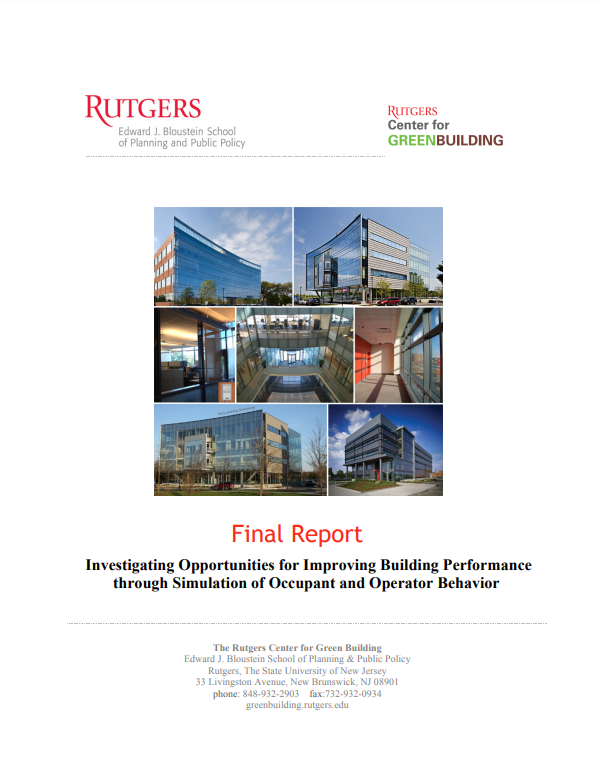This is the final report for a project funded in part by the U.S. Green Building Council’s Green Building Research Fund in 2009. The research investigates opportunities for improving building performance and occupant satisfaction through an iterative process of empirical fieldwork in green buildings and computer simulation modeling.
The fieldwork took place in commercial buildings in the Greater Philadelphia area owned by Liberty Property Trust and the New Jersey Economic Development Authority. It consists of building performance evaluations that
document energy usage and system functionality, plus post-occupancy evaluations that document occupant perceptions and behaviors by means of walk-throughs, interviews, surveys, and building-management logs.
The computer simulation work employs an agent-based modeling approach that implements the Belief-Desire Intention framework used in the artificial intelligence community to represent human decision making. This work is executed using newly-authored Java programming, the NetLogo modeling environment, and hot-linked engineering design packages including, most recently, EnergyPlus. Data collected during the fieldwork provides a
basis for calibrating and validating the models.
This project demonstrates that the simulation modeling framework is feasible and useful. It shows the value of tailoring building designs to accommodate heterogeneous users who have diverse comfort preferences and respond to indoor environmental conditions in a variety of ways. It allows architects and engineers to perform what-if experiments regarding the usability of specific building design features.
Additionally, this project has generated a variety of important empirical insights about how social and organizational factors affect occupant behavior, and thereby affect the efficacy of specific green building strategies. Locus of control is a particularly problematic area, wherein control over building systems often does not map well onto social structures and organizational hierarchies. This is also a source of confusion over the respective roles of building operators and occupants. Lack of coordination between core and shell designs and those for interior fit-out of tenant spaces is another, better recognized problem in the same vein.
The notable contributions of this project are to demonstrate an innovative approach for simulating occupant behavior using agent-based modeling techniques, and to provide a solid grounding for the modeling work by linking it directly to detailed empirical observations within case study buildings. Recommended next steps include strengthening and disseminating the simulation-modeling framework, extending it and the field research to address more fully the operator-occupant nexus and similar social and organizational factors, and advancing consideration of usability metrics within the LEED framework.
